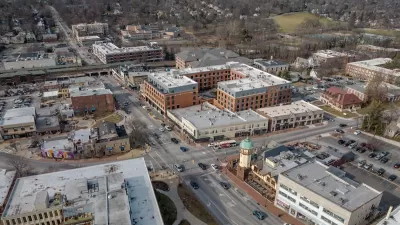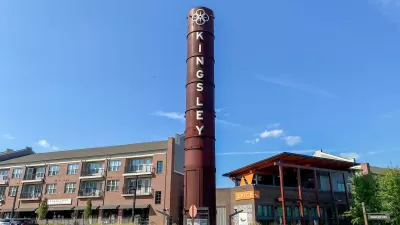Wendell Cox looks at how single-family detached housing came to be, and why it's likely to remain a popular option for the middle class.
"It may be that it was called a dream first in America, but its beginnings go back much further. For much of human history, most people who lived in large cities were forced to put up with virtually inhuman densities. By definition, large cities were compact. Indeed, they were often not a lot larger in their geographical expanse than smaller cities. Why? To be efficient labor markets, cities had to be small, so that all of the workers could get to all of the jobs – and in those days the only way to get around was by foot. As cities got larger, especially during the industrial revolution, densities rose in some neighborhoods to 200,000 and more per square mile. The lower East Side of New York topped out at 375,000 in the 1910 census and has since dropped by 75 percent."
"But not everyone lived in such crowded conditions. Throughout history, the most wealthy have had their castles, estates and mansions. This was true in the cesspool of 19th century American and European industrial cities, just as it was in Rome.
The coming of mechanized transport, especially urban and suburban commuter rail systems changed all this. In the latter half of the 19th century the upper middle class began to enjoy a small modicum of estate life."
FULL STORY: Of Houses, Castles and the Universal Dream

Trump Administration Could Effectively End Housing Voucher Program
Federal officials are eyeing major cuts to the Section 8 program that helps millions of low-income households pay rent.

Planetizen Federal Action Tracker
A weekly monitor of how Trump’s orders and actions are impacting planners and planning in America.

Ken Jennings Launches Transit Web Series
The Jeopardy champ wants you to ride public transit.

Opinion: Transit Agencies Must View Service Cuts as Last Resort
Reducing service could cripple transit systems by pushing more riders to consider car ownership, making future recovery even less certain.

‘Smart Surfaces’ Policy Guide Offers Advice for Building and Maintaining Urban Tree Canopies
Healthy, robust tree canopies can reduce the impacts of extreme heat and improve air quality.

New Jersey Lawsuit Targets Rent-Setting Algorithms
The state of New Jersey is taking legal action against landlords and companies that engage in what the state’s Attorney General alleges is illegal rent fixing.
Urban Design for Planners 1: Software Tools
This six-course series explores essential urban design concepts using open source software and equips planners with the tools they need to participate fully in the urban design process.
Planning for Universal Design
Learn the tools for implementing Universal Design in planning regulations.
Heyer Gruel & Associates PA
Ada County Highway District
Institute for Housing and Urban Development Studies (IHS)
City of Grandview
Harvard GSD Executive Education
Toledo-Lucas County Plan Commissions
Salt Lake City
NYU Wagner Graduate School of Public Service





























